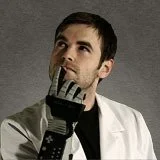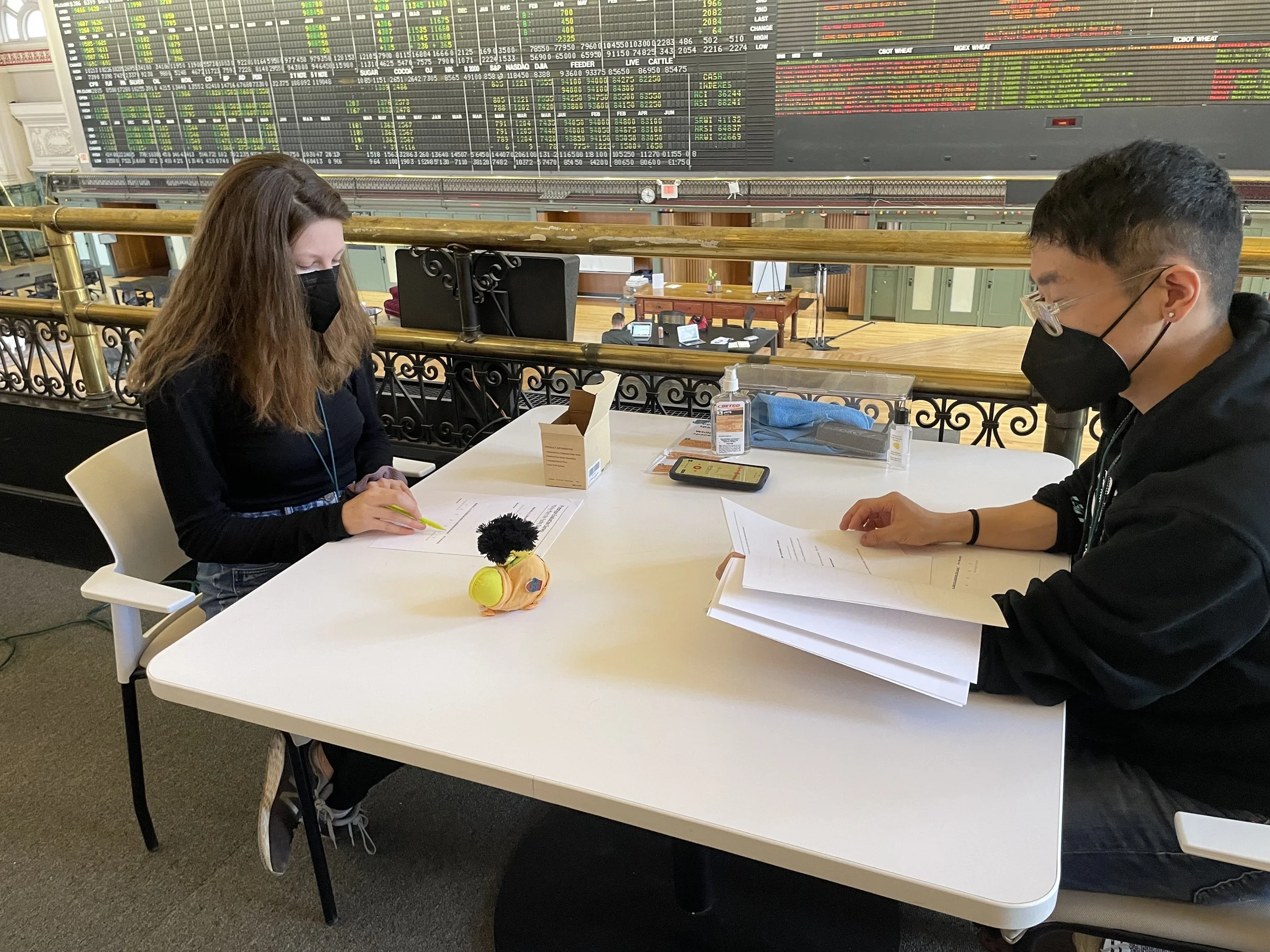Welcome Gift for the Full-Stack Engineering Students
Client Overview
Prime Digital Academy design challenge!
The Challenge
I took on a short-term project to research and design a new welcome gift for Prime Digital Academy’s Full-Stack students, as a substitute for the collapsible water bottle Prime had previously been offering as a welcoming gift. The staff have heard that some students have found it rather unusable and impersonal, and thus, I wanted to conceptualize a substitute gift that the upcoming Full-Stack students would find meaningful and worthwhile.
The Solution
Build-a-Duck Day is an icebreaking experience for Prime Digital Academy’s Full-Stack students to build rapport with each other and slowly ease into their new life as students.
My Roles: User Experience Designer, UX Researcher
Duration: 1 week
Tools: Sketching, Zoom, Google Slides, Keynote, Physical Prototyping
The Process
Day One and Two : Research & Insights
To start things off, I opted to observe the student culture to develop empathy and better understand the struggles of a Full-Stack student. Using the AEIOU Framework, I sought to answer these questions:
What does the day-to-day look like for a Full-Stack student— What activities are they trying to accomplish?
In regards to their activities, what objects and devices do people have in this environment?
What is the nature of the interactions between people and objects?
What is the atmosphere in these spaces like?
Based on my observations and interactions with the students, I was able to conclude my design goal:
“Prime’s Full-Stack students place highest value in Time-Efficiency, Collaboration, and most importantly, fostering a sense of belonging to the Community.”
With this design goal in mind, I went back to the drawing board. As I move forward with my efforts to understand the students and conceptualize a meaningful substitute, I wanted to understand the reason behind the negative feedback of Prime’s previous welcoming gift— the collapsible water bottle. What made it so unusable and impersonal? I spent the majority of the second day using the collapsible water bottle and conducted a Heuristic Analysis to experience and detect usability problems.
Heuristic Analysis - Results
Throughout Day 2, I used the collapsible water bottle and noticed its’ selling points. Its collapsibility made it easy to transport and store. The minimalist design of the bottle was aesthetically pleasing and its’ concept was simple and straightforward— “twist-on, twist-off” to drink and close.
Unfortunately, its’ selling points were also some of its biggest flaws, resulting in violations of Usability Heuristic Principles. One of the biggest flaw coming from its’ collapsibility— students are unable to customize and personalize the bottle, and thus, no sense of attachment whatsoever.
Legend - Severity of Violation
Day Three : Coming up with ideas and solutions
Comfort/Efficiency : Noise-Cancelling Headphones
Programmers spend most of their time at their computers, and require intense focus and drive, to code accurately and efficiently. My hopes for this substitute gift was that students could get into a “flow state-of-mind” and focus on coding without distractions, while also reducing stress in the process.
Sense of belonging to Community : Prime Gear
My hopes for this concept was to have students feel proud of belonging to a larger community within Prime by being welcomed with a backpack full of Prime-branded clothing. Students can feel at ease, being able to represent Prime pride and strut around with Prime gear.
Collaboration/Community Building Experience : Build-a-Duck Day
Students spend the first day on campus collaborating and personalizing a toy ducky. My hopes for this concept was that it could be an icebreaker activity for the shy, anxious students to foster a sense of collaboration and community, but also provide a fun, slow transition into their campus-life. Long-term, the duck would become a meaningful souvenir/memento item.
Build-a-Duck Day - Context
(Rubber Duck Debugging is a method of finding bugs/errors in code, popularized in software engineering circles. Rubber duck debugging helps programmers sort out a coding problem by forcing them to talk through all choices and actions so far to hopefully show possible mistakes. It allows the programmer to explain the code to the duck, an object that has no knowledge of code— this allows them to be more precise and thorough because they’re explaining with the assumption that the duck doesn’t know anything about code.)
Using findings from my observational researches from the previous days, I sketched three different concepts of alternative welcoming gifts, each with different design goals in mind. My design team helped to narrow down my ideas to one single concept: “Build-a-Duck Day”
Day Four : Prototyping and Testing
With my concept and design goal in mind, I sought to create a prototype with my design team and test out the concept. We created multiple prototypes at a scrap workshop!
(Pictured Below : Turning Mark Hurlburt, CEO of Prime Digital Academy into a Ducky)
(Mark Hurlburt, CEO of Prime Digital Academy, wearing the Nintendo Power Glove)
With my completed prototype in hand, it was finally time to do Evaluative Testing of the concept of “Build-a-Duck Day” with actual Full-Stack students.
Evaluative Testing
Objectives / Research Goals
Gauge relative interest/value in the concept
Identify possible points of improvement
Obtain student opinions and thoughts of concept
Finalize concept with revisions, if need be
Action Steps
15-minute interviews, closing survey
Record interviews and survey talk-throughs
Synthesize qualitative and quantitative data
Finalize data to create presentation for Client
We’ll start off the testing with 15 minute interviews, followed by a closing survey.
Survey Questions
Scale of 1 - 7 : “I like the idea of this concept”
Scale of 1 - 7 : “I’d like to be able to customize the duck.”
Scale of 1 - 7 : “This concept makes me feel like part of the community”
Scale of 1 - 7 : “I have a use for this”
Scale of 1 - 7 : “I would keep this.”
Scale of 1 - 7 : “This product is meaningful to me.”
I created User Cards to separate and distinguish Users and collect their relevant information and significant quotes throughout the process.
Key Learnings from Evaluation Tests
3/3 participants liked the idea of the concept
2/3 participants felt that the concept would help in community-building
2/3 participants felt that the concept would be meaningful
3/3 participants had stress and anxiety easing into campus-life
3/3 participants liked the duck being customizable
2/3 participants would keep the duck throughout school
2/3 participants felt that the concept would be useful
1/3 participants knew about the Rubber-Duck Debugging method
Now that the concept has been tested and the data has been synthesized, my next steps are to finalize and prepare a presentation to my client, Prime Digital Academy, proposing my new welcome gift for the Full-Stack students!
Day Five : Finalizing and Pitching to Client
Keeping in mind my design goals and User values, I condensed all my findings into a slideshow presentation. With this presentation pitch, I wanted my concept of “Build-a-Duck Day” to convey a sense of collaboration and community-building that the students valued so highly.
“Through the collaboration comes the community-building, and through the community-building comes the meaningful gift experience.”
Conclusion
Next Steps
Follow up with Client
Expand on concept idea
Continue tests with other students to find further points of improvement
Conduct more interviews to solidify findings
Conduct Heuristic Analysis
Key Takeaways
Prime’s Full-Stack students place high value on Time-Efficiency, Collaboration, and Community Building.
Rubber Duck Debugging is not a well-known technique within Prime Digital Academy.
The Full-Stack students value personalization to be most meaningful— otherwise they have no ties to the object, concept, etc.
What I Did
Conduct research in order to understand pain points and opportunity areas
Evaluate the usability of an existing design using a set of pre-defined success criteria (Heuristic Analysis)
Prototype solutions based on research findings
Adjust design decisions based on project constraints
Propose relevant methods for evaluating designs/prototypes
Evaluate prototypes with end users in order to support design recommendations
Visually present design recommendations that support key goals












